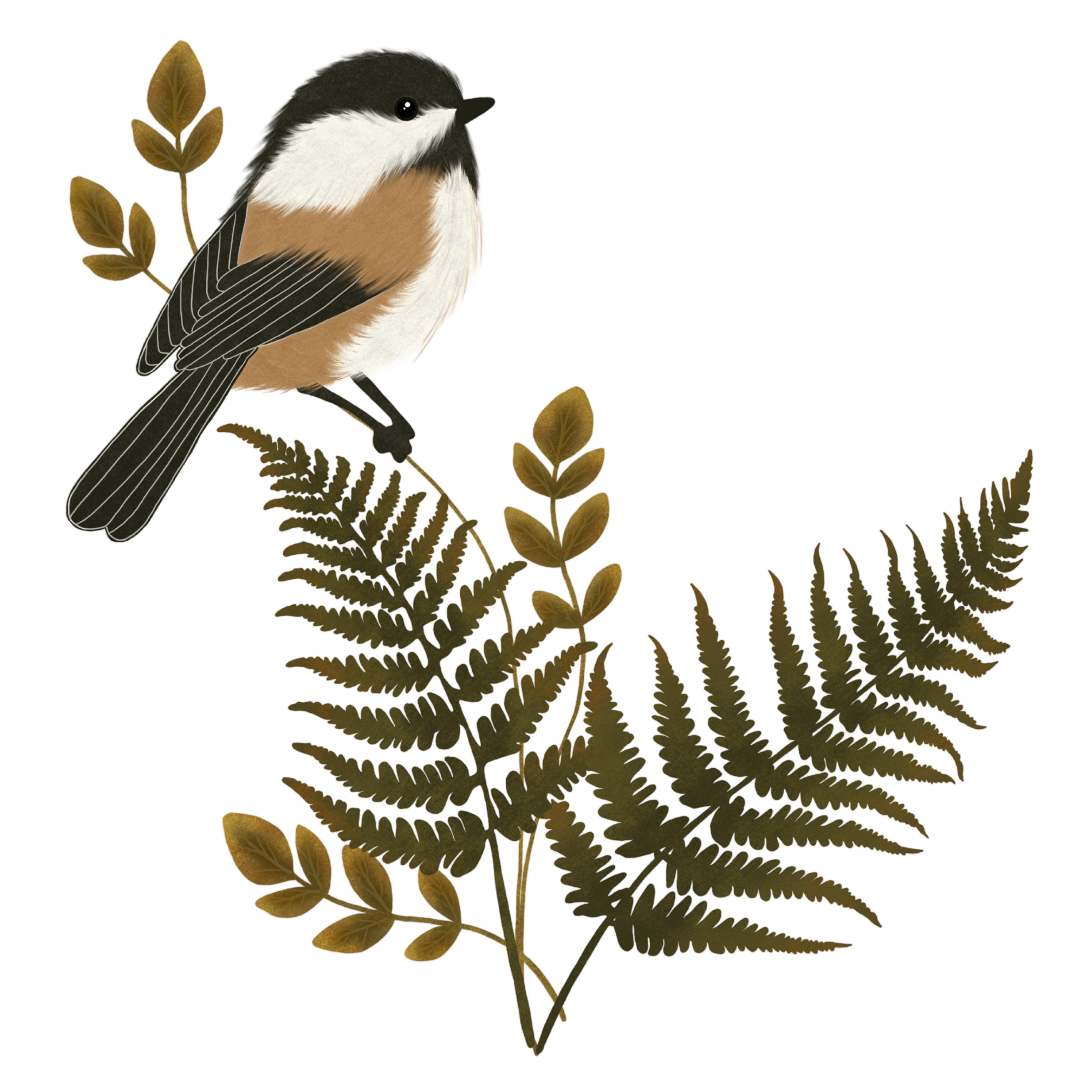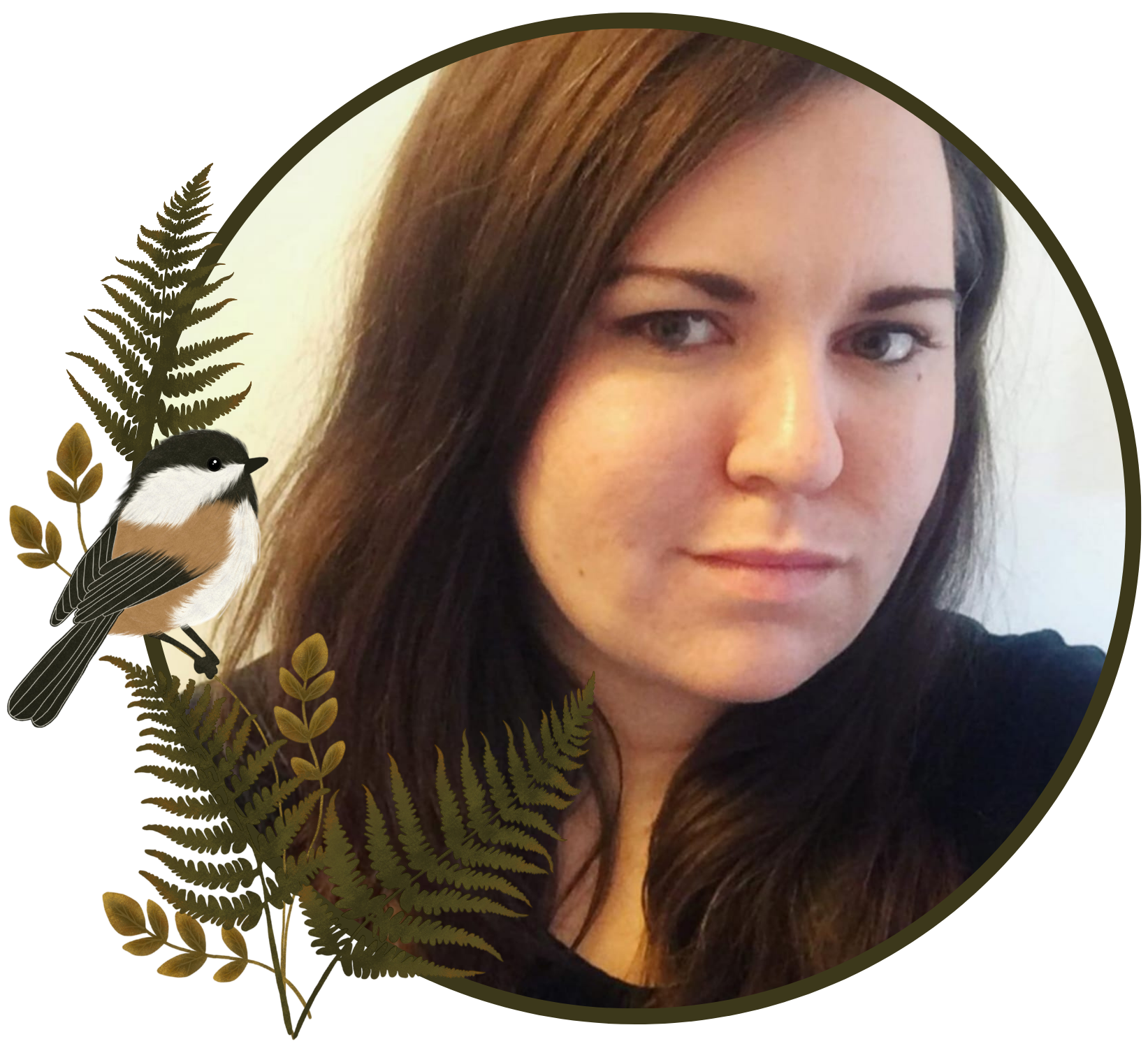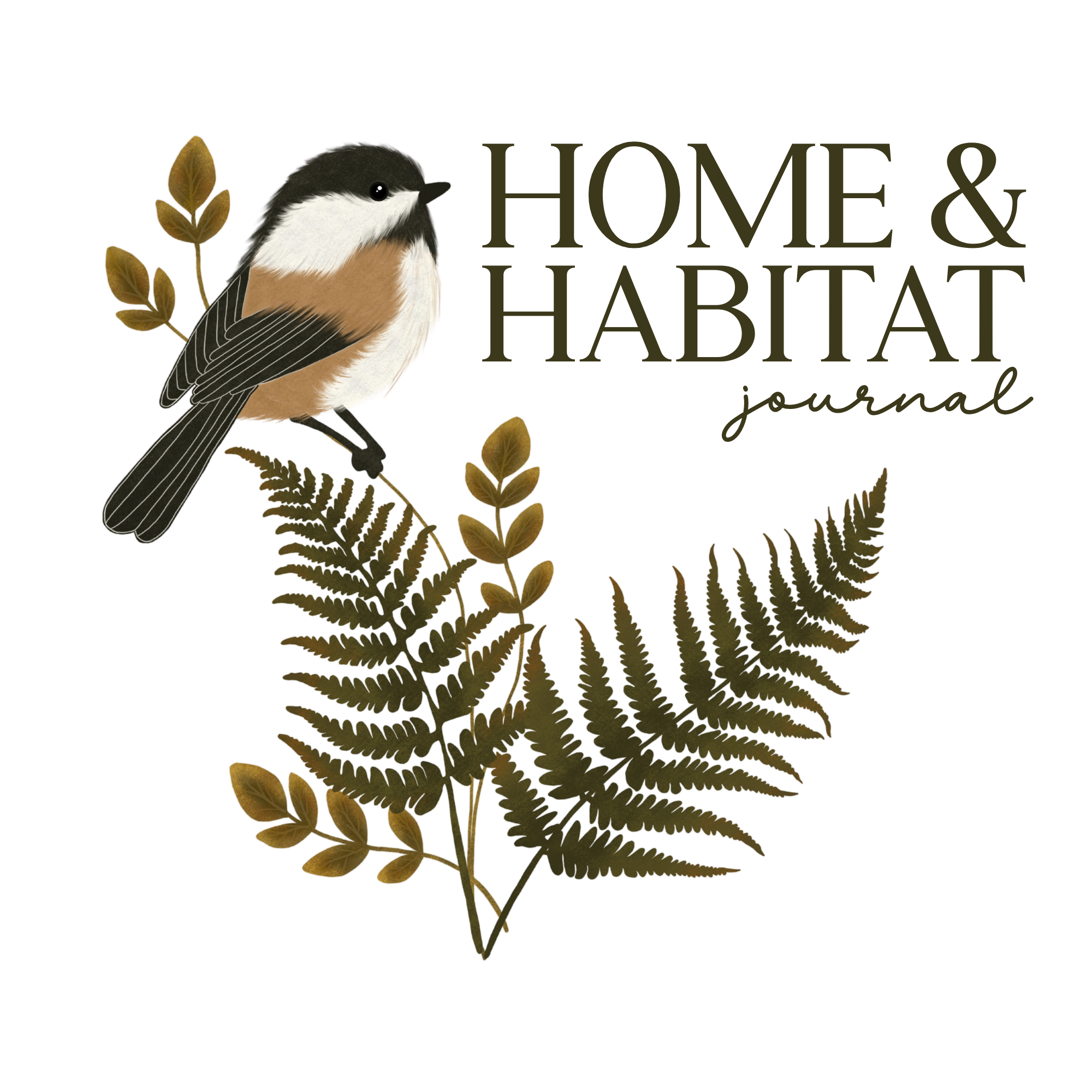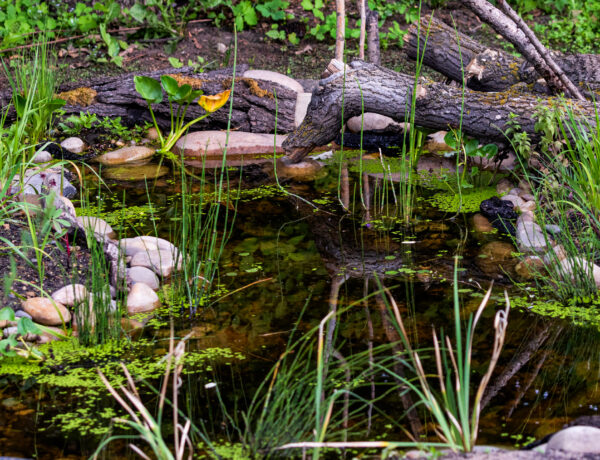May – the month we plant the seeds of change.
The earth softens beneath our feet, warmed by longer days. Buds swell and birds call, and in every quiet corner, the promise of new life begins to stir. It is a season of becoming – when roots take hold, birds return, and wild things rise to meet the light.
The first half of the month moved at a slower rhythm. My focus was on repairing the pond in time for the arrival of migrating birds – an urgent task that left little time or energy for planting. By mid-May, spring had fully awakened, with the weather swinging between bursts of heat and stretches of cool, steady rain. The unpredictable weather made it harder to accomplish as much as I had hoped, but the plants did not seem to mind.
Though there were no dramatic changes this month, the yard continued to shift quietly – an inch here, a leaf there – toward something wilder, fuller, and more alive. And while I always hope to do more, I am learning to savour the slow progress and trust that the transformation often happens in the in-between.


Slide to see how the yard transformed this month
Wildlife Pond Rebuild
After a slow start to the season, we finally tackled rebuilding the pond. I had to take it apart completely to track down the source of the water loss and check for a potential leak in the liner. Thankfully, the liner was intact, and the soil underneath wasn’t unusually saturated – a huge relief.
While everything was dismantled, I took the opportunity to make a few improvements. I reshaped the structure by adding proper shelves along the top edge, while leaving the bottom sloped. I was cautious about how much extra liner I had to work with and didn’t want to run short. Though in hindsight, I probably could have made a few more adjustments. To prep the base, I added a layer of sand over the soil to smooth it out (and to use up all the sand I took out of the pond). Once the liner edges are hidden, I plan to create a little beachy section with the remaining sand for the birds to use as a dust bath.
In the original setup, I used quite a bit of sand and pea gravel on top of the liner. This time around, I skipped the sand inside of the pond, and just used pea gravel to fill gaps between the rocks.
Reassembling the pond was much easier this time, now that the rocks had a proper shelf to rest on. That said, I did have one hiccup: after placing the entire first row of rocks, I realized that I hadn’t positioned the liner quite right. So, off came the rocks, a bit of adjusting, and then back they went. Thankfully I caught it early before things got too far along.
The pond was without water for a few days (Sunday afternoon to Tuesday evening) and I was surprised by how many birds noticed. An American Robin looked visibly irritated, and a very pouty Blue Jay made its feelings known. (We do have a birdbath as well, so they weren’t completely out of water).
The day after it was finished (Wednesday), a few curious visitors dropped by to check it out. Then, from Thursday through Saturday, the pond came alive. It was unbelievable – birds were everywhere! I spotted five new lifers: Least Flycatcher, Orange-crowned Warbler, LeConte’s Sparrow, Cooper’s Hawk, and Eastern Phoebe. Four of them on Saturday alone. There is nothing quite like seeing birds enjoying something you created – it’s so satisfying and affirming.
As I didn’t love how version one of the pond had turned out, I am glad I decided to start fresh. Now, it actually feels right. There is still work to do – hiding the liner, adding pond plants, and finishing the landscape around it. But we are getting there. I had trouble finding native aquatic plants locally, and after coming up empty in my city, I finally found a greenhouse here in Alberta that carries what I am looking for. Native plants are important not just for their beauty, but for the habitat and stability they bring to a space like this – supporting pollinators, birds, and the delicate balance of the ecosystem. I’ve sent them a request for a quote on what I want to order, and am waiting to hear back so we move on to the next step.







Pond rebuilding progress


Pond full of water



Garden
We kicked off our garden over the May long weekend with a fresh plan to grow more peas and cucumbers. To maximize space, we zig-zagged the trellis – giving the peas an extra 30 inches to climb. Alongside that, I transplanted strawberries and planted nasturtiums, lettuce, dill and marigolds.
Since our garden is quite small, we decided to try a new approach with the layout. To squeeze in more plants, we opted for tighter spacing and companion planting, making the most of every inch.
By Monday of the long weekend, I had most of the garden planted. It was a long day of digging and sowing – I ran out of carrot seeds, and I am still waiting for a warmer day to plant the corn and beans. I also need to find a container for the potatoes.
So far, I’ve planted tomatoes, onions, garlic, cucumbers, borage, basil, Johnny jump ups, sweet alyssum, sunflowers, chives, peas, dill, lettuce, a few carrots, a watermelon, and mini pumpkins.


Old Plants
There is something especially rewarding about seeing familiar plants come back after a long winter. I thought I had lost a few – like a Red Columbine and some Fireweed – but they’ve pushed through, proving me wrong. Even more surprising were the raspberries, ferns, and bleeding hearts that showed up, quietly reclaiming their space after I assumed that they were gone.
Not everything bounced back, though. I was hopeful that the clover and grass I seeded would reappear with spring, but they struggled after winter. The heavy rains did help reveal some uneven patches in the yard, which gave me a chance to regrade a few areas that still needed it, and start reseeding the back. It’s been a slow process – partly because we laid a patch of sod near the patio as a designated bathroom spot for our pup. The idea was to keep him from trudging through the muddy sections still waiting to grow in. It’s taken him a couple of weeks to get used to it, but he is finally starting to catch on.
Elsewhere in the yard, some of last year’s plantings exceeded expectations. Our Virgina Creeper and Western white clematis both survived the winter in the cedar planters that I built, despite not being wrapped. The Twining honeysuckles are also thriving, and several plants I tucked into the garden in their containers last autumn made it through the cold months just fine.
I love this quiet kind of resilience. These plants remind me that things are happening below the surface even when everything looks still.



New Plants
Our winter-sown plants are slowly starting to emerge-some definitely taking their sweet time. The Yarrow, Calendula, Tall sunflowers, Chamomile, and Forget-me-nots are doing especially well. It’s always exciting to see those first few sprouts after months of waiting and wondering. And while some seeds are dragging their heels, the moss is thriving like it’s been training for this moment all winter.
My Alberta native plug orders arrived. I got: Canada Anemone, Blue Flag Iris, Twinflower, Wild Mint, Mountain Sweet Cicely, Wild Red Raspberry, Marsh Violet, Wild Strawberry, Woods Rose, Dwarf Birch, Twining Honeysuckle, and Mountain Cranberry. I haven’t planted anything from these orders yet, as a lot of these are going into a planter that I am building.
My tree order also arrived this month. I got: Cedars, Saskatoons, a columnar apple, Virginia creepers, and Birch. The trees arrived much smaller than expected though, which partially turned out to be a bit of a relief. I had originally planned to build large planters for some of the Paper birches near the pond, but with their current size, there is no rush. I’ll plant what I can directly, pot up the rest for now, and overwinter them in the garage if need be. The planter project can wait for later in the season, I have more pressing projects that need to be completed.
However, the cedars we received were a lot smaller than I had expected, so we picked up a few larger ones from The Home Depot to fill in the gaps. The smaller ones will be planted between the bigger trees, and over time, they’ll fill in.
I also picked up a few extras during greenhouse visits: Sweet alyssum, lavender, fuchsia, marsh marigold, horsetail. I had Creeping Jenny in the mix too, but returned them and bought a few Boston ferns for the patio instead. I also grabbed two Majesty palms, though they (along with the Boston ferns) roasted a bit during the recent heatwave.
I detangled and transplanted the Scarlet runner beans and Cardinal climbers. Both are climbing near the hummingbird feeder, where I’m hoping they will attract some hummingbirds.
In true spring fashion, maple saplings are popping up everywhere. I’ve been digging them out as I weed, and kept a few to pot up. I’ve even been toying with the idea of trying bonsai – maybe I’ll create a little forest with them.






Odds & Ends
There are always a few projects that don’t quite fit into any category – half-finished builds, spontaneous finds, and tasks that quietly get done in the background.
I am still working on the large planter that I started last autumn. It gave me some grief back then, so I left it in the garage over winter. After a minor flood, I had to take it apart to get the wood off of the wet floor. This spring, I picked it back up again and managed to finish constructing it. Now I just need to stain it, and add some braces to keep it sturdy under the weight of the soil.
We did a bit of weeding – cleared out the weeds along the garage in the alley and made a start on the front yard. It got too hot to finish, but it’s progress. Though I am not sure what I still want to do with the flower beds right up against the house. It’s a dry, tricky spot where very little seems to thrive. I am thinking of maybe planting some shrubs in the back, and wildflowers in the front, but I haven’t quite found the inspiration I am looking for. For now, I’m letting the space sit until the right idea takes root.
One of my favourite scores this month was a 10½-foot branch I spotted in my local Buy Nothing group. I commented so fast because I knew it had to become a snag for the wildlife habitat around the pond. It wasn’t going to fit in the Jeep, so we had to cut it. Now I have a 7½-foot piece and a 3-foot one, which honestly works out even better. More snags, more habitat.




May felt like a balancing act – between rest and work, waiting and growing. While some things took longer than I hoped, I can feel the energy of the yard shifting. The birds returned, the pond came back to life, and our little patch of land is slowly becoming what we envisioned. One root at a time.
🌿 Want to follow the transformation from the beginning of the year? Start here with April’s recap to see what’s changed.
If this post sparked an idea or made you pause to notice the beauty in your own space, I would be so grateful if you shared it with a friend, on your social media, or saved it for later. Every share helps this little patch of land inspire more backyard birders, native plant gardeners, and nature-lovers.
Thanks for reading! Until next time,
Tracey

If you enjoy what I share and want to support my journey to rewild and document this little patch of land, you can do so through my Ko-fi page. Your support helps me continue photographing, nurturing, and sharing this space with you.

Tracey | Home & Habitat Journal
A birdwatching, plant-loving, thrift-hunting homebody crafting a space where comfort and nature live side by side.
HomeAndHabitatJournal.com
Where cozy living meets wild spaces—this is home, shaped by nature. From backyard birds to native blooms, wildlife habitats to cozy corners. Join me on this journey, and connect with me on social media to let nature inspire your space too!
PIN IT!





No Comments